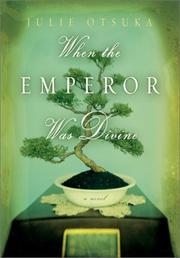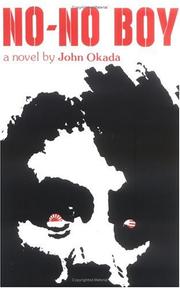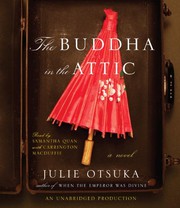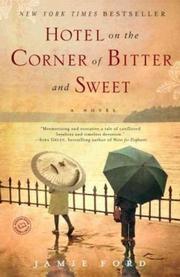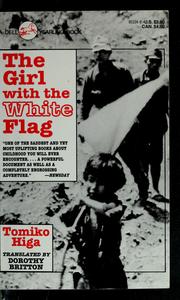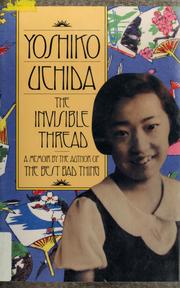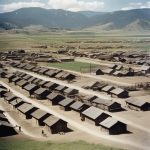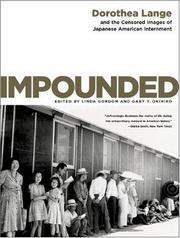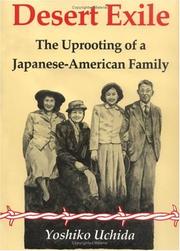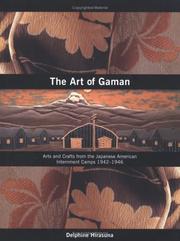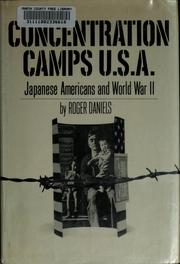Are you interested in learning more about the history of Japanese internment camps? Look no further! We’ve compiled a list of the 20 best books on Japanese internment camps that will provide you with a comprehensive understanding of this dark period in American history. From personal memoirs to historical accounts, these books offer a powerful and insightful look into the experiences of those affected by this tragic chapter. Whether you’re a history buff or simply looking to educate yourself, these Japanese internment camps books are a must-read.
Contents
- 1 20 Best Books About Japanese Internment Camps
- 2 When the Emperor Was Divine
- 3 Farewell to Manzanar
- 4 No-No Boy
- 5 The Buddha in the Attic
- 6 Hotel on the Corner of Bitter and Sweet
- 7 Snow Falling on Cedars
- 8 Obasan
- 9 The Train to Crystal City
- 10 The Girl with the White Flag
- 11 The Invisible Thread
- 12 Impounded: Dorothea Lange and the Censored Images of Japanese American Internment
- 13 Desert Exile: The Uprooting of a Japanese American Family
- 14 The Art of Gaman: Arts and Crafts from the Japanese American Internment Camps 1942-1946
- 15 Years of Infamy: The Untold Story of America’s Concentration Camps
- 16 The Children of Topaz: The Story of a Japanese-American Internment Camp
- 17 Farewell to Manzanar
- 18 Concentration Camps USA: Japanese Americans and World War II
- 19 Imprisoned: The Betrayal of Japanese Americans during World War II
- 20 Years of Infamy: The Untold Story of America’s Concentration Camps
- 21 Ghosts from the Nursery: Tracing the Roots of Violence
- 22 Conclusion
- 23
- 24 Books on Drug Addicts: Discover the Top 20 in our 2024 Updated List
- 25 Best Books About Death For 5 Year Old. 2024 Edition
- 26 Books about Refugees And Immigrants: 2024's Best Titles
20 Best Books About Japanese Internment Camps
When the Emperor Was Divine
by Julie Otsuka
When the Emperor Was Divine by Julie Otsuka is a powerful novel that delves into the harrowing experience of a Japanese-American family during World War II. Set against the backdrop of the Japanese internment camps, the book follows the family’s journey as they are forced to leave their home and live in confinement. Otsuka’s lyrical prose and haunting narrative offer a poignant portrayal of the emotional and psychological toll of the internment camps on the family, as well as the broader Japanese-American community. Through vivid imagery and deeply personal accounts, the novel sheds light on the resilience and courage of those who endured this dark chapter in American history. When the Emperor Was Divine is a compelling and important book about Japanese internment camps that resonates with readers long after the final page.
Farewell to Manzanar
by Jeanne Wakatsuki Houston and James D. Houston
Farewell to Manzanar is a poignant memoir that provides a first-hand account of life in the Japanese internment camps during World War II. Written by Jeanne Wakatsuki Houston and James D. Houston, the book offers a powerful and emotional portrayal of the injustices faced by Japanese Americans during this dark period in American history. Through vivid storytelling and personal experiences, the authors shed light on the hardships, resilience, and strength of the individuals who were unjustly forced into the internment camps. Farewell to Manzanar is a compelling and informative read that offers insight into a little-known aspect of American history, making it a must-read for anyone interested in learning about this chapter of the past.
No-No Boy
by John Okada
No-No Boy is a powerful and poignant novel written by John Okada that explores the aftermath of Japanese internment camps during World War II. The book delves into the struggles and conflicts faced by Japanese Americans, focusing on the experiences of a young man who refuses to pledge allegiance to the United States or serve in the military. The novel provides a raw and honest portrayal of the discrimination and challenges faced by Japanese Americans during this tumultuous period in history. Okada’s writing is both insightful and thought-provoking, offering readers a glimpse into the emotional and psychological toll of the internment camps. No-No Boy is a must-read for anyone interested in gaining a deeper understanding of the Japanese internment camps and the impact they had on individuals and their families.
The Buddha in the Attic
by Julie Otsuka
The Buddha in the Attic by Julie Otsuka is a powerful and evocative novel that follows the lives of Japanese picture brides who immigrated to America in the early 1900s. The story is told in a collective first-person voice, capturing the experiences and emotions of these women as they settle in a new country, face discrimination, and build their lives. The book explores themes of identity, community, and the impact of war on families. Through poetic prose, Otsuka paints a vivid and moving portrait of the struggles and triumphs of these women, culminating in their unjust internment during World War II. This haunting and beautifully written book about Japanese internment camps sheds light on a dark chapter in American history and the resilience of the human spirit.
Hotel on the Corner of Bitter and Sweet
by Jamie Ford
Hotel on the Corner of Bitter and Sweet by Jamie Ford is a captivating historical fiction novel that explores the impact of the Japanese internment camps during World War II. Set in Seattle, the story follows the unlikely friendship between a Chinese-American boy, Henry Lee, and a Japanese-American girl, Keiko. As the war rages on, Henry and Keiko’s bond is tested by the prejudice and fear surrounding them. The novel delves into themes of love, loss, and the resilience of the human spirit in the face of adversity. Through poignant storytelling and vivid imagery, the author sheds light on a dark chapter in American history, offering a compelling and emotional narrative that will resonate with readers long after the final page.
Snow Falling on Cedars
by David Guterson
Snow Falling on Cedars is a captivating novel by David Guterson that delves into the complex themes of love, justice, and prejudice. Set in a small town on an island in the Pacific Northwest, the story unfolds against the backdrop of a Japanese internment camp during World War II. The narrative centers around a murder trial, in which a Japanese American man is accused of killing a local fisherman. As the trial progresses, the novel explores the deep-seated racial tensions and the impact of the internment camps on the community. Guterson’s lyrical prose and richly drawn characters make this a powerful and thought-provoking read that sheds light on a dark period in American history. This book about Japanese internment camps offers a poignant and insightful exploration of the human experience during a tumultuous time in the nation’s past.
Obasan
by Joy Kogawa
Obasan by Joy Kogawa is a powerful and deeply moving novel that delves into the painful history of Japanese Canadians during World War II. Set in Canada, the book explores the experiences of Japanese Canadians who were forced into internment camps and the lasting impact of this injustice on their lives. Through the eyes of the protagonist, Naomi Nakane, the novel delves into themes of identity, memory, and the trauma of displacement. Kogawa’s lyrical prose and poignant storytelling shed light on a dark chapter in Canadian history, offering a deeply personal and emotional portrayal of the struggles faced by those affected by the internment camps. Obasan is a compelling and important read for anyone interested in learning more about this often overlooked aspect of World War II history.
The Train to Crystal City
by Jan Jarboe Russell
The Train to Crystal City by Jan Jarboe Russell is a captivating book about Japanese internment camps during World War II. Russell tells the powerful and heartbreaking story of the little-known family internment camp in Crystal City, Texas. The book follows the lives of two American-born children of Japanese ancestry, who are forcibly relocated to the camp with their parents. Russell provides a detailed account of the harsh conditions and the emotional turmoil experienced by the families as they navigate through the challenges of internment. The Train to Crystal City sheds light on a dark chapter in American history and brings to life the struggles and resilience of those affected by the injustice of internment camps. This book is a must-read for anyone interested in learning about this often overlooked aspect of World War II history.
The Girl with the White Flag
by Tomiko Higa
The Girl with the White Flag is a captivating memoir by Tomiko Higa, depicting her harrowing experiences during World War II. This poignant book chronicles Higa’s survival and resilience as a young girl in war-torn Okinawa. After witnessing the devastation of the battle of Okinawa, Higa becomes separated from her family and embarks on a perilous journey through the war-torn landscape, facing hunger, fear, and loss. Her determination and bravery are exemplified by the white flag she waves as a symbol of hope and survival. This powerful narrative provides a firsthand account of the hardships endured by civilians during the war, shedding light on the human cost of conflict. The Girl with the White Flag is a compelling and insightful read, offering a personal perspective on the impact of war and the resilience of the human spirit. A must-read for anyone interested in books about Japanese internment camps and wartime experiences.
The Invisible Thread
by Yoshiko Uchida
The Invisible Thread by Yoshiko Uchida is a compelling and poignant book about Japanese internment camps during World War II. Uchida, a Japanese-American, shares her personal experiences and the stories of her family and friends as they are forced to leave their homes and live in internment camps. Through her vivid and emotional storytelling, she explores the themes of resilience, hope, and the enduring human spirit in the face of adversity. The book offers a powerful and insightful look into a dark chapter of American history, shedding light on the injustices and hardships faced by Japanese-Americans during the war. Uchida’s writing is both evocative and thought-provoking, making The Invisible Thread a must-read for anyone interested in learning about this important period in history.
Impounded: Dorothea Lange and the Censored Images of Japanese American Internment
by Linda Gordon and Gary Y. Okihiro
Impounded: Dorothea Lange and the Censored Images of Japanese American Internment by Linda Gordon and Gary Y. Okihiro is a captivating exploration of the hidden history of Japanese American internment during World War II. This compelling book sheds light on the censorship and suppression of Dorothea Lange’s powerful photographs, which documented the unjust incarceration of Japanese Americans. Through evocative imagery and insightful analysis, the authors uncover the untold stories of resilience, resistance, and resilience in the face of adversity. Gordon and Okihiro’s meticulous research and compelling narrative offer a thought-provoking and poignant examination of this dark chapter in American history. This book on Japanese internment camps provides a crucial perspective on the impact of government-sanctioned racism and the enduring strength of the human spirit.
Desert Exile: The Uprooting of a Japanese American Family
by Yoshiko Uchida
Desert Exile: The Uprooting of a Japanese American Family is a poignant memoir by Yoshiko Uchida, chronicling her family’s experience during World War II. The book provides a personal account of the forced relocation and internment of Japanese Americans in the United States. Uchida vividly describes the emotional turmoil, discrimination, and hardships her family faced as they were uprooted from their home and unjustly incarcerated in internment camps. Through her powerful storytelling, Uchida sheds light on the profound impact of the Japanese American internment camps, offering a compelling and insightful perspective on this dark chapter in American history. Desert Exile is a compelling and deeply moving book about the Japanese internment camps, offering a valuable and important insight into a period of injustice and adversity.
The Art of Gaman: Arts and Crafts from the Japanese American Internment Camps 1942-1946
by Delphine Hirasuna
The Art of Gaman is a poignant and compelling book on Japanese American internment camps during World War II. Delphine Hirasuna’s book offers a glimpse into the creativity and resilience of the internees through their arts and crafts. From intricate wood carvings to delicate jewelry, the book showcases the beautiful and resourceful works of art created by those who were unjustly detained. Through stunning photographs and personal stories, Hirasuna sheds light on the strength and spirit of the incarcerees who found solace and purpose in their art during a time of great hardship. The Art of Gaman is a moving tribute to the ingenuity and endurance of those who endured the hardships of internment, and a testament to the power of creativity in the face of adversity.
Years of Infamy: The Untold Story of America’s Concentration Camps
by Michi Weglyn
Years of Infamy is a groundbreaking book on Japanese American internment camps during World War II. Michi Weglyn provides an in-depth and detailed account of the experiences of Japanese Americans who were forcibly removed from their homes and incarcerated in concentration camps. Through personal stories, historical documents, and meticulous research, Weglyn sheds light on this dark chapter of American history, revealing the untold stories of resilience, injustice, and perseverance in the face of adversity. This book about Japanese internment camps is a powerful and emotional examination of the impact of war hysteria and racism on the lives of thousands of innocent individuals. Years of Infamy offers a compelling and essential exploration of a period that is often overlooked in traditional historical narratives, making it a must-read for anyone interested in understanding this significant and often overlooked aspect of American history.
The Children of Topaz: The Story of a Japanese-American Internment Camp
by Michael O. Tunnell
The Children of Topaz: The Story of a Japanese-American Internment Camp by Michael O. Tunnell is a compelling and poignant book about the experiences of Japanese-American children who were interned at the Topaz War Relocation Center during World War II. Tunnell skillfully weaves together personal stories, historical context, and archival photographs to provide a vivid and insightful account of life in the internment camp. Through the eyes of the children, readers gain a deeper understanding of the hardships, resilience, and strength displayed by those affected by this dark chapter in American history. This powerful and educational book sheds light on a little-known aspect of the Japanese-American internment camps and is a must-read for anyone interested in this period of American history.
Farewell to Manzanar
by Jeanne Wakatsuki Houston
Farewell to Manzanar is a poignant memoir by Jeanne Wakatsuki Houston that provides a vivid portrayal of life in a Japanese internment camp during World War II. This powerful book on Japanese internment camps recounts the author’s experiences as a young girl, forced to leave her home and endure the hardships of internment. Through her compelling narrative, Houston sheds light on the injustices and struggles faced by Japanese Americans during this dark period in history. The memoir offers a firsthand account of the emotional and psychological impact of being confined in a Japanese internment camp, while also celebrating the resilience and strength of the human spirit. Farewell to Manzanar is a gripping and important book about Japanese internment camps that serves as a reminder of the enduring consequences of prejudice and discrimination.
Concentration Camps USA: Japanese Americans and World War II
by Roger Daniels
Concentration Camps USA: Japanese Americans and World War II by Roger Daniels is a comprehensive and eye-opening book about the Japanese internment camps during World War II. Daniels delves into the history of this dark chapter in American history, examining the political and social factors that led to the incarceration of thousands of Japanese Americans. Through meticulous research and compelling storytelling, the author sheds light on the experiences of those who were unjustly detained and the lasting impact it had on their lives. This book is a must-read for anyone interested in understanding the complexities of this period and the resilience of the individuals who endured such hardships.
Imprisoned: The Betrayal of Japanese Americans during World War II
by Martin W. Sandler
Imprisoned: The Betrayal of Japanese Americans during World War II by Martin W. Sandler is a compelling and thorough exploration of the dark chapter in American history. The book delves into the unjust and tragic incarceration of Japanese Americans in internment camps during World War II. Sandler meticulously examines the political climate, racial prejudice, and fear that led to the mass imprisonment of innocent individuals. Through firsthand accounts, photographs, and historical documents, the author brings to light the harrowing experiences of those who were unjustly detained and stripped of their civil liberties. Imprisoned is a poignant and powerful reminder of the devastating impact of wartime hysteria and the violation of human rights. This book about Japanese internment camps is a vital and eye-opening read for anyone interested in understanding this shameful period in American history.
Years of Infamy: The Untold Story of America’s Concentration Camps
by Michi Nishiura Weglyn
Years of Infamy: The Untold Story of America’s Concentration Camps by Michi Nishiura Weglyn is a groundbreaking and eye-opening book about the Japanese internment camps during World War II. Weglyn’s meticulously researched account sheds light on the harsh realities faced by Japanese Americans, who were unjustly detained and stripped of their civil liberties. Through personal stories and historical documentation, the author brings to life the experiences of those who endured this dark chapter in American history. This book is a powerful and essential read for anyone seeking to understand the impact of war hysteria and racism on innocent citizens. Years of Infamy is a compelling and thought-provoking exploration of a little-known aspect of World War II, making it a must-read for those interested in the history of Japanese American internment.
Ghosts from the Nursery: Tracing the Roots of Violence
by Robin Karr-Morse
Ghosts from the Nursery: Tracing the Roots of Violence by Robin Karr-Morse delves into the complex interplay of genetics, environment, and early childhood experiences that can lead to violent behavior later in life. Karr-Morse, drawing on her extensive experience as a family therapist, explores the impact of neglect, abuse, and trauma on the developing brain, and how these early experiences can shape a person’s future actions. The book offers a compelling look at the root causes of violence and provides valuable insights for parents, educators, and policymakers. With its thought-provoking exploration of the factors contributing to societal violence, this book is a must-read for anyone interested in understanding and addressing the origins of aggressive behavior.
Conclusion
Exploring the complexities of Japanese Internment Camps through literature can provide a deeper understanding of this dark chapter in history. The 20 best books about Japanese internment camps offer poignant and powerful narratives that shed light on the experiences of those affected. From memoirs to historical fiction, these books serve as important reminders of the impact of prejudice and discrimination. Dive into these compelling reads to gain insight into the resilience and courage of those who endured these injustices.
Which Japanese Internment Camps book is best?
The best book on Japanese Internment Camps can vary with personal preference, but three widely recommended titles are:
- When the Emperor Was Divine by Julie Otsuka,
- Farewell to Manzanar by Jeanne Wakatsuki Houston and James D. Houston,
- No-No Boy by John Okada.
Each offers valuable insights and could be a great starting point.
What are the best books to learn about Japanese Internment Camps?
For those looking to learn about Japanese Internment Camps, there is a wealth of literature that can provide a comprehensive understanding of the subject. Some of the most highly recommended books include:
- When the Emperor Was Divine by Julie Otsuka,
- Farewell to Manzanar by Jeanne Wakatsuki Houston and James D. Houston,
- No-No Boy by John Okada,
- The Buddha in the Attic by Julie Otsuka,
- Hotel on the Corner of Bitter and Sweet by Jamie Ford,
- Snow Falling on Cedars by David Guterson,
- Obasan by Joy Kogawa,
- The Train to Crystal City by Jan Jarboe Russell,
- The Girl with the White Flag by Tomiko Higa,
- The Invisible Thread by Yoshiko Uchida
These books offer a range of perspectives on Japanese Internment Camps, covering various aspects and approaches to the subject.
What are the best books on Japanese Internment Camps?
The best books on Japanese Internment Camps include:
- When the Emperor Was Divine by Julie Otsuka,
- Farewell to Manzanar by Jeanne Wakatsuki Houston and James D. Houston,
- Impounded: Dorothea Lange and the Censored Images of Japanese American Internment by Linda Gordon and Gary Y. Okihiro,
- Desert Exile: The Uprooting of a Japanese American Family by Yoshiko Uchida,
- The Train to Crystal City by Jan Jarboe Russell,
- Snow Falling on Cedars by David Guterson.
Each offers unique insights into the subject. While these books on the topic of Japanese Internment Camps are highly regarded, it’s important to note that any list of ‘best’ books is subjective and reflects a range of opinions.
What are the best Japanese Internment Camps books of all time?
Choosing the best Japanese Internment Camps books of all time can vary depending on who you ask, but seven titles that are often celebrated include
- When the Emperor Was Divine by Julie Otsuka,
- Farewell to Manzanar by Jeanne Wakatsuki Houston and James D. Houston,
- Hotel on the Corner of Bitter and Sweet by Jamie Ford,
- The Train to Crystal City by Jan Jarboe Russell,
- The Invisible Thread by Yoshiko Uchida,
- Desert Exile: The Uprooting of a Japanese American Family by Yoshiko Uchida,
- and Impounded: Dorothea Lange and the Censored Images of Japanese American Internment by Linda Gordon and Gary Y. Okihiro.
Each of these books has made a significant impact in the field of Japanese Internment Camps and continues to be influential today.

